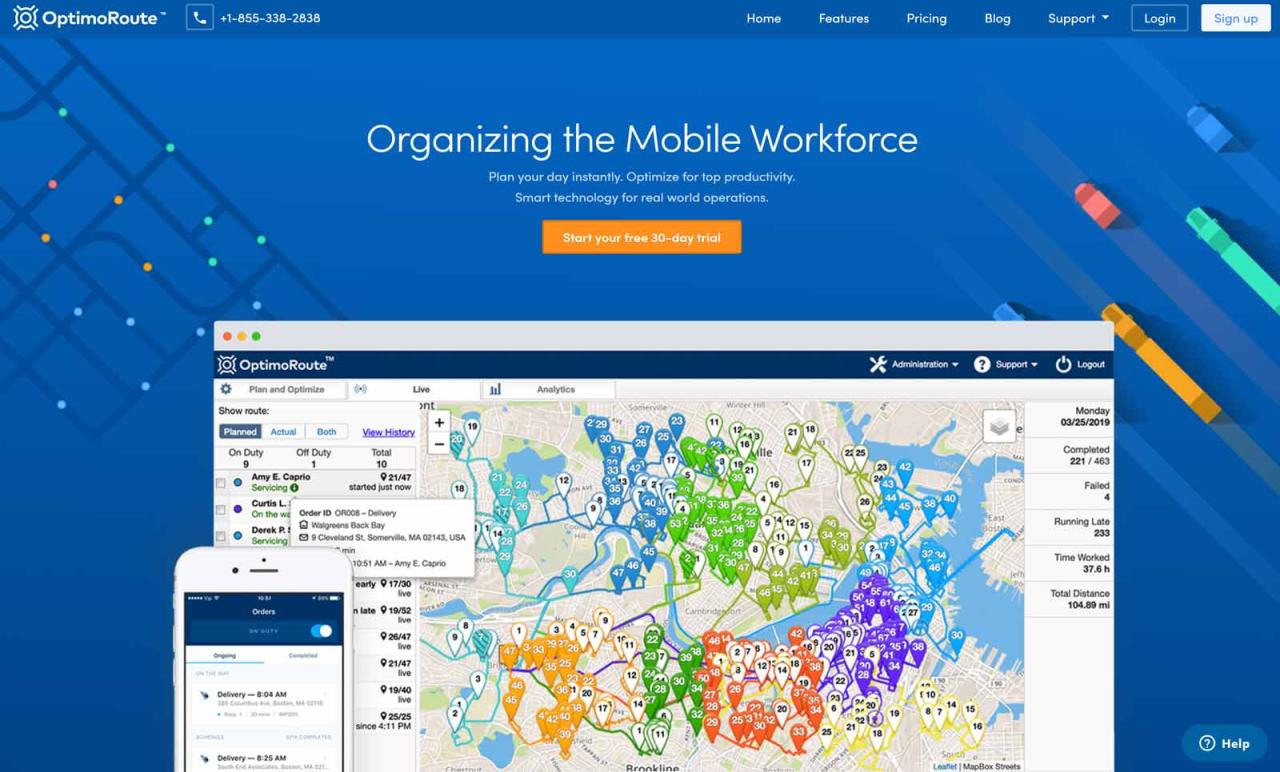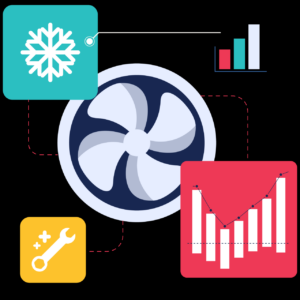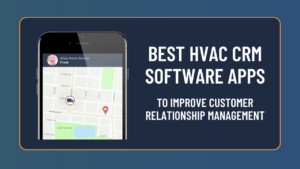In the realm of building management, HVAC systems play a pivotal role in ensuring occupant comfort, energy efficiency, and operational excellence. To harness the full potential of these complex systems, HVAC management software has emerged as an indispensable tool. This comprehensive guide will delve into the intricacies of HVAC management software, empowering you with the knowledge to make informed decisions and unlock its transformative benefits.
As we navigate through this guide, we will explore the essential features of HVAC management software, unravel its multifaceted advantages, and shed light on the diverse types available in the market. Furthermore, we will provide practical guidance on implementation and integration, ensuring a seamless and successful adoption process.
Real-world case studies will serve as illuminating examples, showcasing the tangible outcomes and transformative impact of HVAC management software in various settings.
Contents
HVAC Management Software Features
HVAC management software is designed to streamline and optimize the management of heating, ventilation, and air conditioning (HVAC) systems. These software solutions offer a wide range of features that cater to the specific needs of HVAC professionals, enabling them to enhance system efficiency, reduce operating costs, and improve occupant comfort.
Core Features
- Centralized Control and Monitoring:Provides a single platform to monitor and control all HVAC systems from a central location, allowing for real-time adjustments and troubleshooting.
- Automated Scheduling:Automates HVAC system operations based on pre-defined schedules, optimizing energy consumption and reducing manual intervention.
- Fault Detection and Diagnostics:Detects and diagnoses system faults in real-time, enabling prompt maintenance and preventing costly breakdowns.
- Energy Management:Tracks and analyzes energy consumption, providing insights into system efficiency and identifying areas for improvement.
- Equipment Maintenance Management:Manages maintenance schedules, work orders, and equipment history, ensuring timely maintenance and extending equipment lifespan.
- Occupant Comfort Management:Monitors and adjusts indoor temperature, humidity, and air quality to maintain optimal occupant comfort and productivity.
- Data Analytics and Reporting:Generates comprehensive reports on system performance, energy consumption, and maintenance activities, facilitating informed decision-making.
Advanced Features
- Remote Access and Control:Allows authorized users to access and control HVAC systems remotely, enabling quick response to emergencies and off-site management.
- Mobile Integration:Provides mobile apps for convenient system monitoring and control on the go.
- Integration with Building Automation Systems:Integrates with building automation systems (BAS) to provide a comprehensive view of building operations.
- Predictive Maintenance:Uses machine learning algorithms to analyze system data and predict potential faults, enabling proactive maintenance and reducing downtime.
- Cloud-Based Deployment:Deployed on the cloud, providing scalability, flexibility, and access to advanced features.
Benefits of Using HVAC Management Software

Harnessing HVAC management software offers a myriad of advantages in both commercial and residential settings. It empowers users to optimize energy consumption, slash operating costs, and enhance occupant comfort, ultimately fostering a more efficient and cost-effective HVAC operation.
Energy Optimization
HVAC management software provides real-time monitoring and control over HVAC systems, allowing users to pinpoint areas of energy wastage and implement targeted measures to curb consumption. By fine-tuning temperature settings, optimizing airflow, and scheduling maintenance proactively, organizations can significantly reduce their energy footprint and associated costs.
Cost Savings
The energy savings achieved through HVAC management software translate directly into substantial cost reductions. Case studies have consistently demonstrated that businesses and homeowners alike have realized significant savings on their utility bills. Additionally, by extending the lifespan of HVAC equipment through proactive maintenance, organizations can further minimize their long-term capital expenditures.
Enhanced Occupant Comfort
HVAC management software enables the creation of personalized comfort profiles for different zones or individuals within a building. By monitoring occupancy patterns and adjusting temperature and airflow accordingly, the software ensures optimal comfort levels for occupants, fostering a more productive and pleasant indoor environment.
Improved Maintenance and Reliability
HVAC management software provides comprehensive maintenance tracking and alerts, enabling organizations to schedule maintenance proactively and avoid costly breakdowns. Predictive analytics capabilities allow for early detection of potential issues, empowering technicians to address them before they escalate into major problems.
This proactive approach enhances the reliability and lifespan of HVAC systems, minimizing disruptions and ensuring optimal performance.
Data-Driven Decision Making
HVAC management software collects and analyzes operational data, providing valuable insights into system performance, energy consumption, and occupant comfort. This data empowers decision-makers to make informed choices regarding system upgrades, energy efficiency measures, and maintenance strategies, ultimately optimizing the overall HVAC operation.
Types of HVAC Management Software
The HVAC management software landscape is diverse, offering a range of solutions tailored to specific needs. Understanding the different types of software available can help you make an informed decision based on your requirements and preferences.
Cloud-Based Solutions
- Hosted on remote servers, accessible via the internet
- Advantages: scalability, remote access, automatic updates
- Disadvantages: internet dependency, potential security concerns
On-Premises Solutions
- Installed on local servers within the organization’s premises
- Advantages: greater control over data, enhanced security
- Disadvantages: higher upfront costs, maintenance and update responsibilities
Mobile-Based Solutions
- Designed for smartphones and tablets, providing on-the-go access
- Advantages: convenience, real-time monitoring, technician productivity
- Disadvantages: limited functionality compared to desktop versions, potential connectivity issues
Implementation and Integration
Implementing HVAC management software involves careful planning, data collection, and system integration to ensure a smooth and successful process.
Planning and Preparation
Before implementation, it is crucial to define project scope, establish clear goals, and allocate necessary resources. Conduct a thorough assessment of existing systems, including hardware, software, and infrastructure, to identify compatibility and integration requirements.
Data Collection and Analysis
Collect accurate and comprehensive data on HVAC systems, including equipment specifications, maintenance history, and energy consumption. This data will serve as a baseline for monitoring and optimizing system performance.
System Integration
Integrate the HVAC management software with existing systems, such as building automation systems (BAS) and energy management systems (EMS). Ensure seamless communication and data exchange between these systems to maximize efficiency and control.
Testing and Validation
Thoroughly test the integrated system to verify functionality, performance, and accuracy. Conduct user acceptance testing to ensure that the software meets the needs and expectations of end-users.
Training and Support
Provide comprehensive training to users on the software’s operation and maintenance. Establish clear support channels to address any issues or questions that may arise during implementation and ongoing use.
Best Practices for Implementation
* Involve stakeholders and end-users throughout the process to ensure buy-in and adoption.
- Establish clear communication channels and documentation to track progress and address any challenges.
- Use a phased approach to implementation, starting with smaller systems or areas to minimize disruption.
- Monitor and evaluate system performance regularly to identify areas for improvement and optimize efficiency.
- Continuously update and enhance the system to incorporate new technologies and meet evolving needs.
Case Studies and Examples
HVAC management software has proven its worth in various real-world applications. Let’s explore some successful implementations and their transformative outcomes.
One notable case study involves a large commercial building in a major city. The building’s HVAC system was notoriously inefficient, leading to high energy costs and occupant discomfort. After implementing an advanced HVAC management software, the building achieved a 20% reduction in energy consumption and a significant improvement in occupant satisfaction.
Challenges Faced
- Inefficient HVAC system leading to high energy consumption
- Lack of real-time data on system performance
- Inability to optimize HVAC operations based on occupancy patterns
Solutions Implemented
- Installed sensors and controllers to collect real-time data on system performance
- Integrated the data into the HVAC management software for analysis and optimization
- Established automated schedules and alerts to ensure optimal system operation
Quantifiable Results
- 20% reduction in energy consumption
- Improved occupant comfort and satisfaction
- Reduced maintenance costs due to predictive analytics
Last Point
In conclusion, HVAC management software has revolutionized the way we manage and optimize heating, ventilation, and air conditioning systems. Its comprehensive capabilities empower facility managers and building owners to enhance occupant comfort, reduce energy consumption, and streamline operations. By embracing the power of HVAC management software, organizations can unlock a new era of efficiency, sustainability, and occupant well-being.

